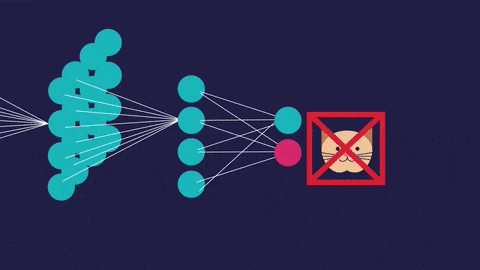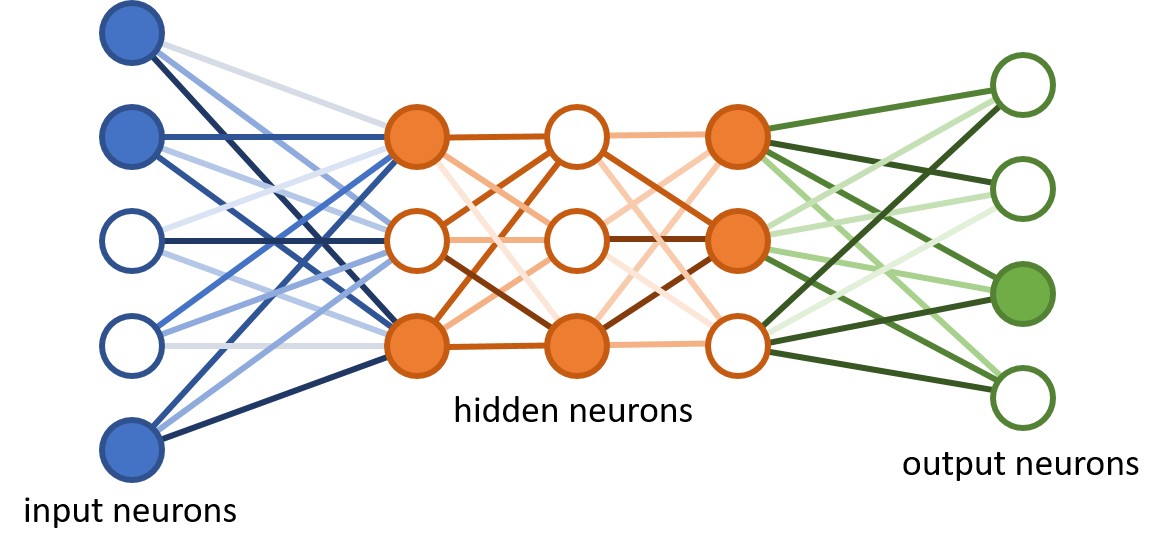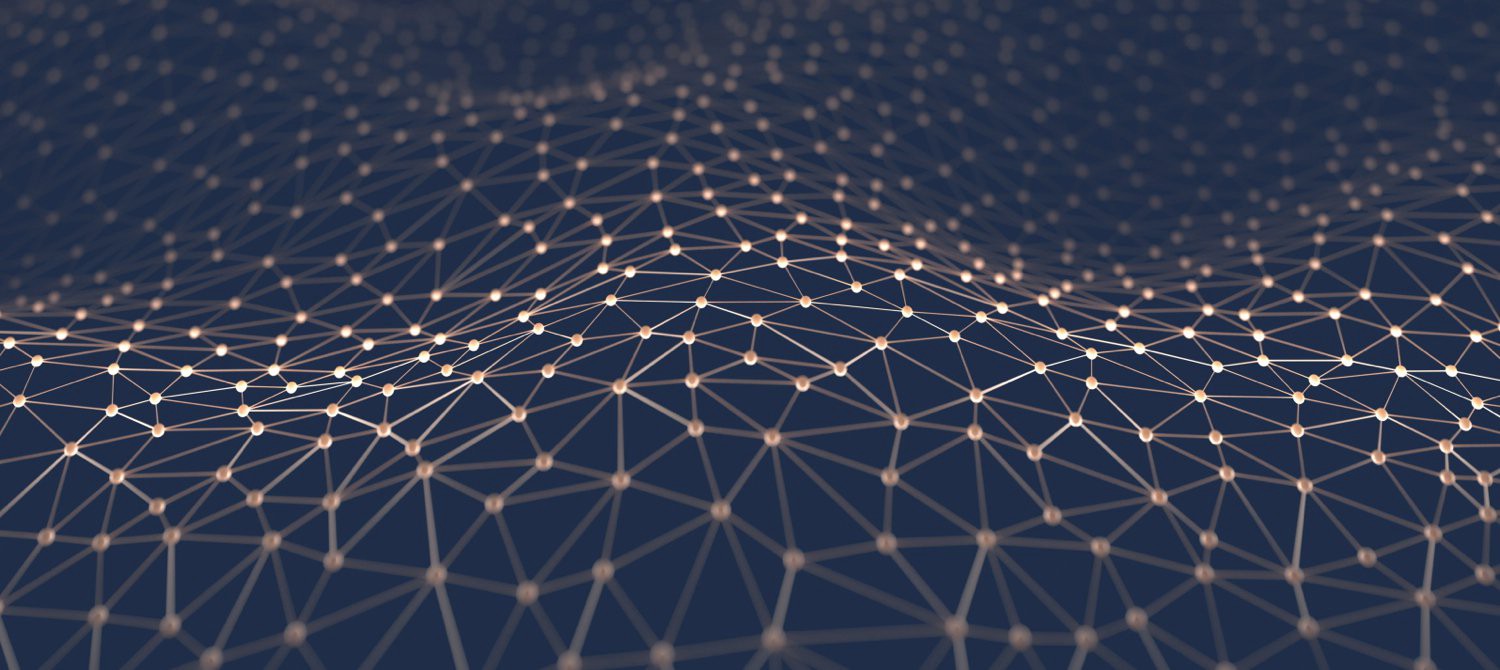What is “Neural Network”
Modern neuroscientists often discuss the brain as a type of computer. Neural networks aim to do the opposite: build a computer that functions like a brain.
Of course, we only have a cursory understanding of the brain’s complex functions, but by creating a simplified simulation of how the brain processes data, we can build a type of computer that functions vary from a standard one.
Computer processors process data (“in order”). They perform many operations on a set of data, one at a time. Parallel processing (“processing several streams at once”) speeds up the computer by using many processors in series.

An artificial neural network (so called to distinguish it from the actual neural networks in the brain) has a different structure. It’s interconnected. This allows it to process data vary, learn from that data, and update its own internal structure to improve performance.
The high degree of interconnectedness, but, has some astounding effects. For example, neural networks are very good at recognizing obscure patterns in data.
Some historical facts about Neural Network
Although neural networks are massively innovative computer technologies, the idea goes back to 1943, with 2 prospectors from the Chicago Institute, Warren McCullough, a neurophysiologist and Walter Pitts, a student.
Their article “Logical calculation of thoughts immanent in angry business efficiency” was published for the first time in the journal Brain Theory, which explained the concept that the activation of a neuron is considered the main thing of brain energy. However, this act is largely related to the development of the cognitive doctrines of such a time, and 2 prospectors moved to the Massachusetts Scientific and Technical University, in 1952, to begin the first section of cognitive science.
In the 1950s, neural intrigues were a fertile field for studying computerized neural intrigues, including Perceptron, which provided visual definitions of images based on the difficult eye of a fly. In 1959, 2 prospectors from the Stanford Institute designed MADALINE (almost all ADAptive LINear Elements), with a neural network extending from beyond the theoretical and taking on an important issue. MADALINE was used to reduce the number of echoes on the telephone line, to increase the quality of the voice and was so successful, as if it remains in paid use for the current time. Despite the initial interest in the artificial origin of neural networks, the 1969 book from the Massachusetts Scientific and Technical University, Perceptrons: the introduction to computational geometry deserves interest. The creators showed their own skepticism in the artificial origin of neural networks and, as probably, it is probably considered a dead end in the search for the genuine artificial origin of the mind. Probably muffled this area for studies in the 1970s movement, both in terms of interest and in financing. Despite the fact that certain aspirations lasted, and in 1975 the first multi-layer network was invented, opening the way for the upcoming development in neural networks, an acquisition that some considered to be unfeasible less than in 10 years.
Enthusiasm by 1982 was renewed in neural networks, as soon as John Hopfield, Dr. of Princeton Institute, came up with an associative neural network; the innovation was contained in the fact that these had the opportunity to wander, as previously it was only unidirectional, and is also famous for its own inventor as the Hopfield Network. Moving forward, artificially derived neural wiles use great reputation and recovery.

How neural networks learn
Unlike other algorithms, neural networks with their deepest learning do not have any chance of being programmed for the task. Faster, they have a need, like the developing brain of a baby, so that they need to find out the information. The learning strategies go through three methods
- Supervised learning: This learning strategy is the simplest, as there is a labeled dataset, which the computer goes through, and the algorithm gets modified until it can process the dataset to get the desired result.
- Unsupervised learning: This strategy gets used in cases where there is no labeled dataset available to learn from. The neural network analyzes the dataset, and then a cost function then tells the neural network how far off of target it was. The neural network then adjusts to increase the accuracy of the algorithm.
- Reinforced learning: In this algorithm, the neural network is reinforced for positive results, and punished for a negative result, forcing the neural network to learn over time.

Application of Neural Networks
Neural networks are used, with applications for financial operations, enterprise planning, trading, business analytics, and product maintenance. Neural networks have also gained widespread adoption in business applications such as forecasting and marketing research solutions, fraud detection and risk assessment.
A neural network evaluates price data and unearths opportunities for making trade decisions based on data analysis. The networks can distinguish subtle nonlinear interdependencies and patterns other methods of technical analysis cannot. But, a 10 percent improvement in efficiency is all an investor can ask for from a neural network. There will always be data sets and task classes that a better analyzed by using before developed algorithms. It is not so much the algorithm that matters; it is the well-prepared input data on the targeted indicator that determines the level of success of a neural network.
Types of neural networks
There are different kinds of deep neural networks – and each has advantages and disadvantages, depending on the use. Examples include:
- Convolutional neural networks (CNNs) contain five types of layers: input, convolution, merge, connect and output. Any layer owns a certain target, for example, summation, inclusion or activation. Convolutional neural intrigues explained the classification of images and the detection of objects. However, CNN is still used in other areas, such as natural language processing and prediction.
- Recurrent neural networks (RNNs) apply consistent information, such as data with a time stamp from a sensor device or a pronounced instruction consisting of a sequence of definitions. Unlike conventional neural grids, all inputs to the recurrent neural network are not dependent on each other, and the output for each element depends on the calculations of its past elements. RNNs are used in forecasting and timeline applications, mood analysis and other text applications.
- Feedforward neural networks, in which each perceptron in one layer is connected to every perceptron from the next layer. Information is fed forward from one layer to the next in the forward direction only. There are no feedback loops.
- Autoencoder neural networks are used to create abstractions called encoders, created from a given set of inputs. Although like more classical neural networks, autoencoders seek to model the inputs themselves, and thus the method is considered unsupervised. The premise of autoencoders is to desensitize the irrelevant and sensitize the relevant. As layers are added, further abstractions are formulated at higher layers (layers closest to the point at which a decoder layer is introduced). These abstractions can then be used by linear or nonlinear classifiers.
Why are neural networks important?
Neural networks are also suited to help people solve complex problems in real-life situations. They can learn and model the relationships between inputs and outputs that are nonlinear and complex; make generalizations and inferences; reveal hidden relationships, patterns, and predictions; and model volatile data (such as financial time series data) and variances needed to predict rare events (such as fraud detection). As a result, neural networks can improve decision processes in areas such as:
- Credit card and Medicare fraud detection.
- Optimization of logistics for transportation networks.
- Character and voice recognition, also known as natural language processing.
- Medical and disease diagnosis.
- Targeted marketing.
- Financial predictions for stock prices, currency, options, futures, bankruptcy and bond ratings.
- Robotic control systems.
- Electrical load and energy demand forecasting.
- Process and quality control.
- Chemical compound identification.
- Ecosystem evaluation.
- Computer vision to interpret raw photos and videos (for example, in medical imaging and robotics and facial recognition).

Neural Networks & Artificial Intelligence
In some circles, neural networks are thought of as “brute force” AI, because they start with a blank slate and hammer their way through to an accurate model. They are effective but to some eyes inefficient in their approach to modeling, which can’t make assumptions about functional dependencies between output and input.
That said, gradient descent is not recombining every weight with every other to find the best match – its method of pathfinding shrinks the relevant weight space, and thus the number of updates and required computation, by many orders of size.
What is “Neural Network”的更多相关文章
- Recurrent Neural Network系列1--RNN(循环神经网络)概述
作者:zhbzz2007 出处:http://www.cnblogs.com/zhbzz2007 欢迎转载,也请保留这段声明.谢谢! 本文翻译自 RECURRENT NEURAL NETWORKS T ...
- Neural Network Toolbox使用笔记1:数据拟合
http://blog.csdn.net/ljp1919/article/details/42556261 Neural Network Toolbox为各种复杂的非线性系统的建模提供多种函数和应用程 ...
- 《Neural Network and Deep Learning》_chapter4
<Neural Network and Deep Learning>_chapter4: A visual proof that neural nets can compute any f ...
- How to implement a neural network
神经网络的实践笔记 link: http://peterroelants.github.io/posts/neural_network_implementation_part01/ 1. 生成训练数据 ...
- CS224d assignment 1【Neural Network Basics】
refer to: 机器学习公开课笔记(5):神经网络(Neural Network) CS224d笔记3--神经网络 深度学习与自然语言处理(4)_斯坦福cs224d 大作业测验1与解答 CS224 ...
- XiangBai——【AAAI2017】TextBoxes_A Fast Text Detector with a Single Deep Neural Network
XiangBai--[AAAI2017]TextBoxes:A Fast Text Detector with a Single Deep Neural Network 目录 作者和相关链接 方法概括 ...
- 论文阅读(Weilin Huang——【TIP2016】Text-Attentional Convolutional Neural Network for Scene Text Detection)
Weilin Huang--[TIP2015]Text-Attentional Convolutional Neural Network for Scene Text Detection) 目录 作者 ...
- 论文阅读(Xiang Bai——【PAMI2017】An End-to-End Trainable Neural Network for Image-based Sequence Recognition and Its Application to Scene Text Recognition)
白翔的CRNN论文阅读 1. 论文题目 Xiang Bai--[PAMI2017]An End-to-End Trainable Neural Network for Image-based Seq ...
- (转)The Neural Network Zoo
转自:http://www.asimovinstitute.org/neural-network-zoo/ THE NEURAL NETWORK ZOO POSTED ON SEPTEMBER 14, ...
- (转)LSTM NEURAL NETWORK FOR TIME SERIES PREDICTION
LSTM NEURAL NETWORK FOR TIME SERIES PREDICTION Wed 21st Dec 2016 Neural Networks these days are th ...
随机推荐
- Java线程状态间的互相转换
ava中线程的状态分为6种. 1. 初始(NEW):新创建了一个线程对象,但还没有调用start()方法. 2. 运行(RUNNABLE):Java线程中将就绪(ready)和运行中(running) ...
- Lumen框架—升级改造之路-仓储层
仓储层与逻辑层搭建 Lumen官方文档:https://lumen.laravel.com/docs/5.5 我的项目地址:https://github.com/BusinessL/big-lume ...
- Springboot 系列(六)Spring Boot web 开发之拦截器和三大组件
1. 拦截器 Springboot 中的 Interceptor 拦截器也就是 mvc 中的拦截器,只是省去了 xml 配置部分.并没有本质的不同,都是通过实现 HandlerInterceptor ...
- 如何让div中的table水平居中
<div style="text-align:center"> <table border="1" cellpadding="3&q ...
- 第一章 渲染调度来龙去脉——插入自己的shader
总有人会问,这个或者那个功能怎么弄,或者看到别人做了什么酷炫的效果也想仿造.其实,功能的实现无非两种: 1.调用Cesium现有的API组合实现:往往照猫画虎,还存在性能不过关的问题,绕了半天其实终究 ...
- Python之路【第六篇】:Python迭代器、生成器、面向过程编程
阅读目录 一.迭代器 1.迭代的概念 #迭代器即迭代的工具,那什么是迭代呢? #迭代是一个重复的过程,每次重复即一次迭代,并且每次迭代的结果都是下一次迭代的初始值 代码如下: while True: ...
- 第九周LINUX 学习笔记
基于GTID的mysql主从简单复制 一.简单主从模式配置步骤1.配置主从节点的服务配置文件1.1.配置master节点:[mysqld]binlog-format=ROWlog-bin=master ...
- 为 VUE 项目添加 PWA 解决发布后刷新报错问题
为什么要给 VUE 项目添加 PWA 为什么要添加?因为不管是部署在 IIS,还是 nginx,每次应用部署后,再次访问因为旧的 js 已经不存在,所以页面访问的时候会整个报错,报错的结果就是一个白屏 ...
- 聊聊分布式开发 Spring Cloud
概述 本文章只是简单介绍了微服务开发的一些关键词,如果需要知道具体实现和可以评论留言 我会及时的增加连接写出具体实现(感觉没人看 就没写具体实现). 持续更新中...... SpringCloud和D ...
- 当 “HTTP” 先生遇上“S”小姐
情人节的晚上,天空中淅淅沥沥的下着带有些寒意的小雨.HTTP 先生孤零零的坐在咖啡厅中,对着面前的电脑发呆.他有意的屏蔽掉了周边情侣们的窃窃私语,这对单身的他来说是狗粮,也是一阵阵伤害.这时,咖啡厅的 ...
